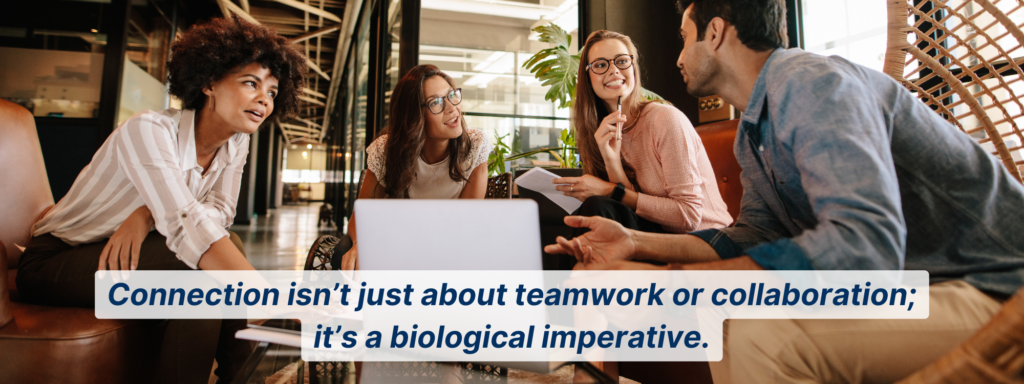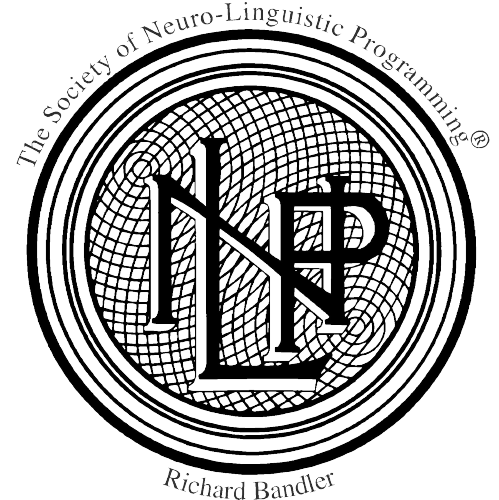The Context
In a world shaped by rapid technological innovation and ongoing global challenges, organisations find themselves navigating uncharted waters. Hybrid work, artificial intelligence, and digital transformation have redefined how we operate. Yet, amidst these advances, one timeless element remains as essential as ever: meaningful human connection.
Connection is not simply a nicety; it is a cornerstone of personal and group resilience. Despite the plethora of digital tools at our disposal, the fundamental human need for connection has only deepened in importance. As Stephen Porges’s Polyvagal Theory reveals, our nervous system is hardwired for social engagement. Connection fosters trust, collaboration, and innovation—essential ingredients for organisational success. High-trust workplaces, according to Gallup, experience 50% higher productivity and 76% greater employee engagement.
In this blog, we will explore the biological foundations of connection, its profound organisational implications, and the strategies leaders can use to cultivate connection without overwhelming their teams. Connection is not merely a tool for survival—it is the lifeblood of thriving, adaptable, and innovative organisations.

The Biology
Connection isn’t just about teamwork or collaboration; it’s a biological imperative. Humans evolved to connect as a survival strategy, relying on trust and cooperation to navigate challenges. Stephen Porges’s Polyvagal Theory sheds light on this: the vagus nerve activates our “social engagement system” when we feel safe, enabling calmness, openness, and collaborative behaviour.
When this system is active, trust and connection flourish, creating an environment where teams can innovate, adapt, and thrive. Conversely, disconnection triggers stress responses akin to fight-or-flight: silos form, communication breaks down, and adaptability suffers. For example, in a hybrid workplace lacking intentional connection strategies, employees can feel isolated, reducing both engagement and productivity.
Leaders who understand the biological roots of connection can design environments that foster safety and trust, countering the stressors of disconnection. When teams feel secure, they collaborate more effectively, share ideas openly, and navigate uncertainty with greater resilience.
The Benefits
The advantages of connection extend far beyond fostering good relationships. Organisations that prioritise meaningful connection unlock benefits at every level:
- Trust as the Foundation
Trust is the bedrock of high-performing teams. It enables open communication, constructive conflict, and creative risk-taking. In high-trust workplaces, collaboration flows freely, leading to innovative outcomes. For instance, a marketing and engineering team working on a new product can align seamlessly in a high-trust environment, ensuring technical excellence and customer-centric design.

- Collaboration and Innovation
When employees feel safe to express ideas without fear of judgment, creativity flourishes. Shared purpose aligns diverse teams, reducing inefficiency and driving collective success. Patagonia’s commitment to sustainability, for example, galvanises employees around a common mission, fostering loyalty and innovation.
The Costs
While connection drives resilience and creativity, its absence breeds dysfunction. Disconnection manifests in silos, mistrust, and inefficiencies that ripple across the organisation:
- Silos and Mistrust
When teams operate in isolation, knowledge sharing falters, decision-making slows, and adaptability diminishes. Silos can erode trust, making employees less likely to collaborate or innovate.
- Fragmentation
Disconnection reduces alignment, causing teams to work at cross-purposes. This fragmentation undermines organisational cohesion and makes it harder to respond to challenges.
The Risks
Connection, while essential, must be managed thoughtfully to avoid potential pitfalls:
- Groupthink
Excessive connection can suppress dissenting opinions, stifling innovation. Organisations need to encourage diverse perspectives to avoid blind spots in decision-making.
- Burnout
Over-connection through constant meetings or endless communication tools blurs boundaries between work and personal life, overwhelming employees.
- Subordination
When alignment takes precedence over individual decision-making, teams can become paralysed, delaying critical actions.
The Balance
Leaders must balance fostering connection with preserving autonomy and well-being. Strategies like meeting-free days and asynchronous communication can reduce over-connection while maintaining collaboration. Leaders play a dual role in fostering connection: they must serve as emotional anchors and systemic architects.
- Emotional Anchors
Grounded leaders signal safety and stability to their teams. According to Polyvagal Theory, a calm and composed leader activates trust, encouraging openness and resilience. Leaders who regulate their emotions create an environment where teams can thrive.
- Connective Architects
Leaders also design systems that sustain connection, such as:
- Feedback Loops: Regular check-ins and pulse surveys promote transparency and dialogue.
- Cross-Functional Initiatives: Structured collaboration across departments breaks down silos.
- Congruence: Alignment between leaders’ words and actions builds trust and psychological safety.
The Complex
Organisations are not machines: like all living systems, they are complex adaptive systems. In such environments, connection is the lifeblood that fosters adaptability and resilience.
- Sensing Weak Signals
Connection enables teams to detect subtle shifts, such as emerging market trends or internal inefficiencies, and respond proactively.
- Emergent Thinking
Collaborative environments allow solutions to arise organically through dialogue and shared insights, rather than being imposed top-down.
- Iterative Decision-Making
Connected organisations adapt in real time, using feedback loops to refine strategies and actions.
The Alternatives
- Connection Sprints: Intense collaboration for specific projects, followed by independent work periods.
- Meeting-Free Days: Uninterrupted time for deep work to reduce fatigue.
- Asynchronous Tools: Slack, email, and project management platforms for non-urgent communication.
- Role Rotations: Encourage cross-functional empathy by exposing employees to different perspectives.
- Cognitive Diversity: Give voice to different perspectives and ways of thinking to enrich problem-solving and creativity.
Final Thought
Human connection is not just a survival mechanism—it is the foundation for flourishing in today’s complex, ambiguous and unpredictable world. Organisations that prioritise trust, collaboration and shared purpose increase their resilience through adaption and innovation. Leaders who balance connection with autonomy, design thoughtful systems, and model emotional stability will transform uncertainty into opportunity.
The future belongs to those who embrace connection as a strategic imperative, building workplaces where trust and unity thrive. Connection can never be just the formal tech and channels through which we communicate. It is the informal, invisible but felt beating heart of every community.




